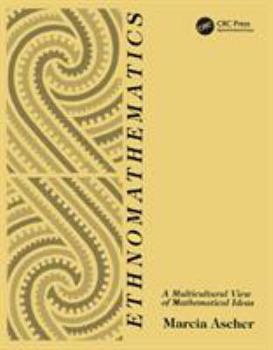Ethnomathematics: A Multicultural View of Mathematical Ideas
Select Format
Select Condition 
Book Overview
In this truly one-of-a-kind book, Ascher introduces the mathematical ideas of people in traditional, or "small-scale", cultures often omitted from discussion of mathematics. Topics such as "Numbers: Words and Symbols", "Tracing Graphs in the Sand", "The Logic of Kin Relations", "Chance and Strategy in Games and Puzzles", and "The Organization and Modeling of Space" are traced in various cultures including the Inuit, Navajo, and Iroquois of North America; the Inca of South America; the Malekula, Warlpiri, Maori, and Caroline Islanders of Oceania, and the Tshokwe, Bushoong, and Kpelle of Africa. As Ascher explores mathematical ideas involving numbers, logic, spatial configuration, and the organization of these into systems and structures, readers gain both a broader understanding and anappreciation for the idease of other peoples.
Format:Paperback
Language:English
ISBN:0412989417
ISBN13:9780412989414
Release Date:June 1991
Publisher:CRC Press
Length:214 Pages
Weight:0.85 lbs.
Dimensions:0.6" x 7.4" x 9.1"
Age Range:18 years and up
Grade Range:Postsecondary
Customer Reviews
1 rating
An exploration of mathematics in traditional peoples
Published by Thriftbooks.com User , 22 years ago
In the current atmosphere of political correctness and emphasis on multicultural attributes, it was inevitable that the mathematical air would be affected. However, any examination of obscure cultures presents an opportunity to lose perspective. It is very easy to examine a cultural attribute, explain it via abstract mathematics, and then call that an example of mathematical sophistication. For as all mathematics teachers know, the ability to do a particular application in no way means that the person knows the theory or can apply it in another context. The author makes an occasional and fairly deep penetration into this pitfall, but on the whole maintains a balanced outlook.Ethnomathematics is given the definition, "study of the mathematical ideas of traditional peoples," and is a loose marriage of mathematics and anthropology. The primary cultures investigated are the Inuit, Navajo, and Iroquois of North America; the Incas, the Malejula, Warlpiri, Maori, and Caroline Islanders of the Pacific; and the Tshokwe, Bushoong, and Kpelle of Africa. Since the vast majority of potential readers have never heard of most of these cultures, reading the book has value as a simple exercise in horizon expanding. In all cases the level of mathematics is not deep, but some exposure to the particular concept is essential.Chapter one describes how the Incas stored information by tying knots in cords (called quipu), and is more discourse than mathematics. The second chapter explains the Bushoong, Tshokwe, and Malekula traditions of drawing figures in sand, and uses graph theory to explain how it is possible to draw some of the figures without lifting the stick. The third one deals with the Warlpiri logic of kin relations, with group theory being the mathematical foundation. This is where the author falls the most, as can be seen from the following quote: "To me it is striking to find that a logical structure studied abstractly and extensively by Western mathematicians plays a central and significant role in the day-to-day life of some peoples." Given the ubiquity of modern mathematics, it would be more surprising if no explanation existed.The fourth chapter deals with the games and puzzles of several of the cultures. Number five describes the perception of geometric shapes by several Native American tribes and how the Caroline Islanders use the heavens to navigate. Here again, it is more a listing of the thoughts than mathematical justification. Chapter Six gives many examples of symmetric patterns of decoration, all of which can be assigned group theoretic analogues.If you are interested in the mathematical thought of these cultures, then this book is essential. However, given the current academic climate, this is no doubt the first in a string of books of this type. Which, when you think about it, is a good thing for us all.Published in Journal of Recreational Mathematics, reprinted with permission.






